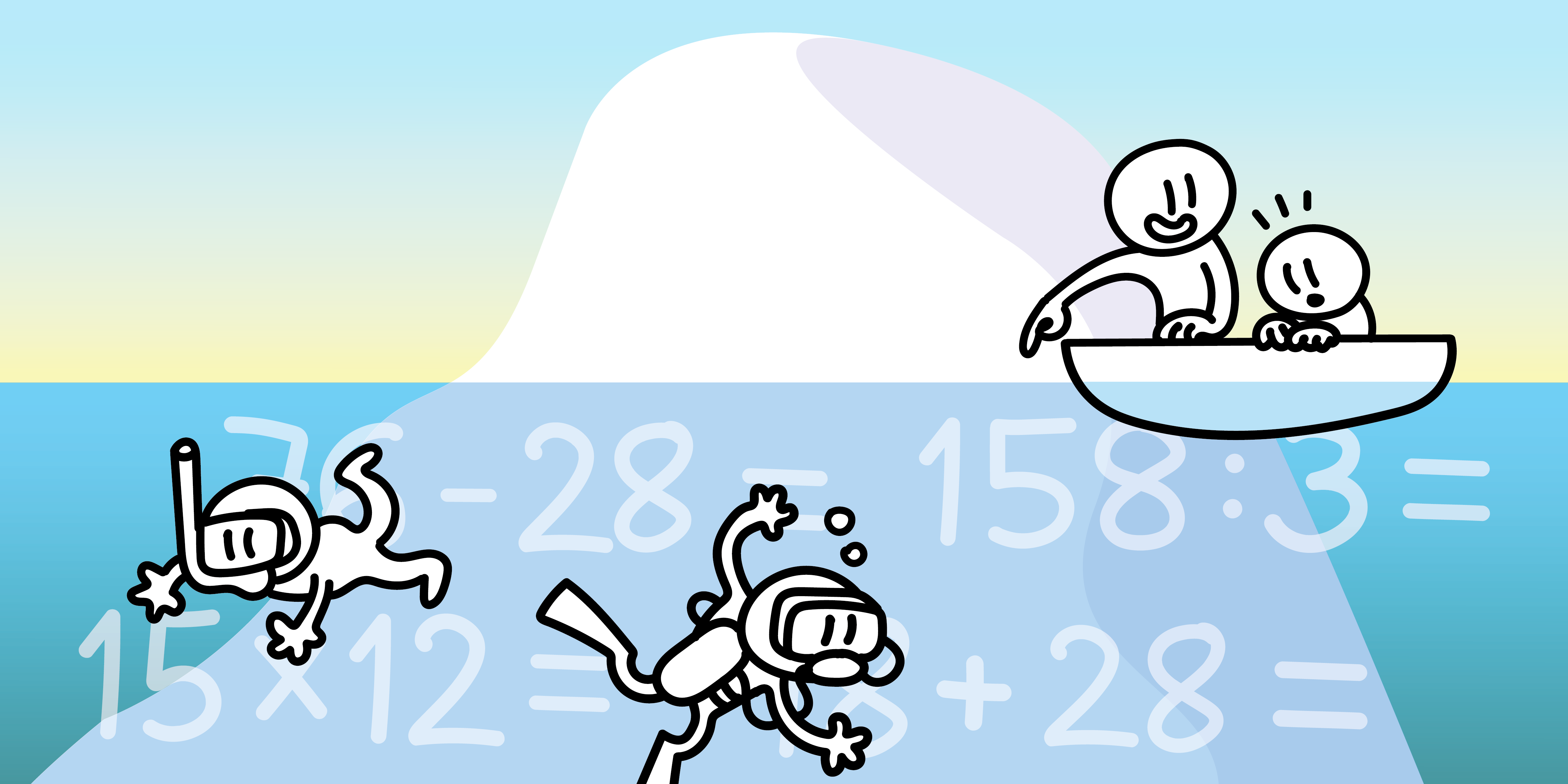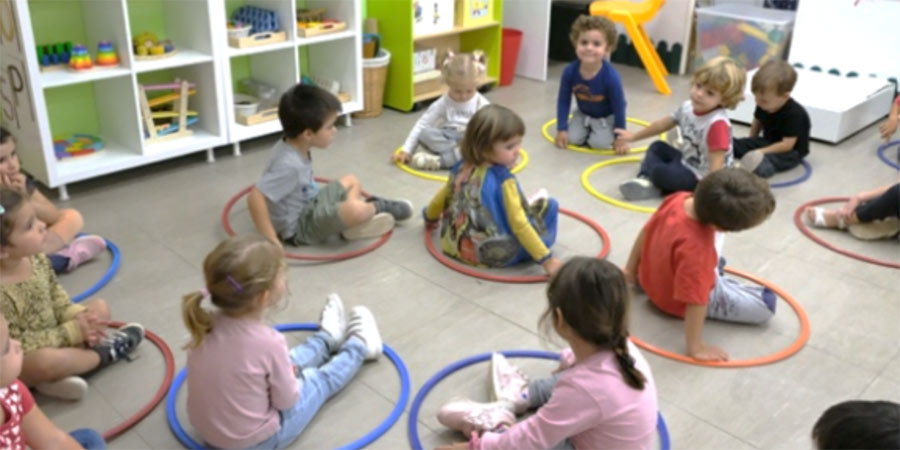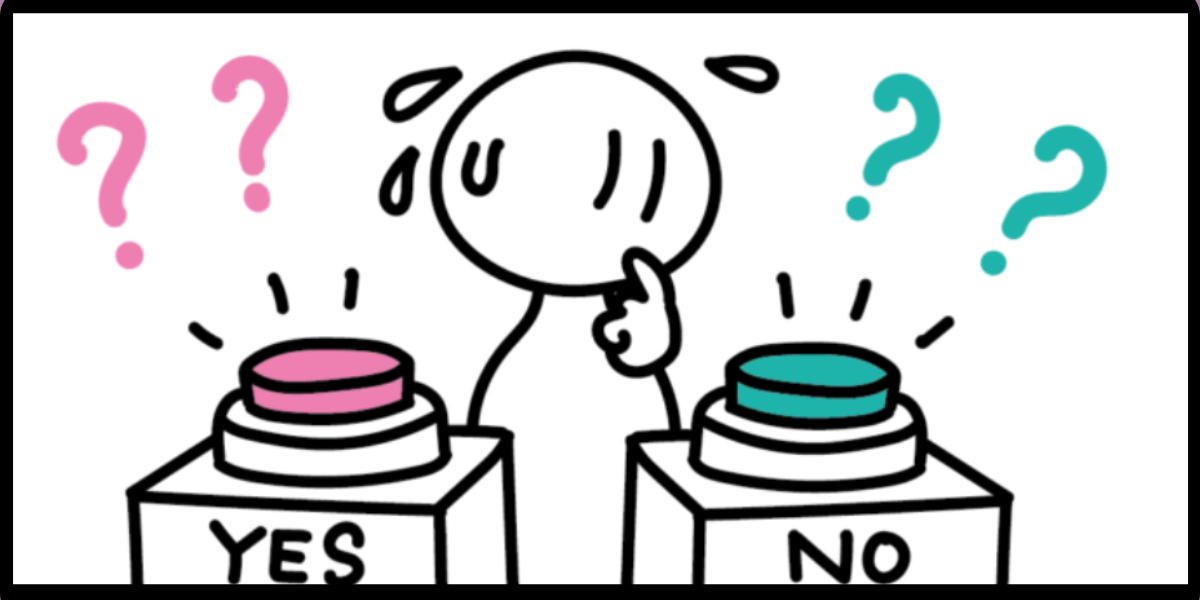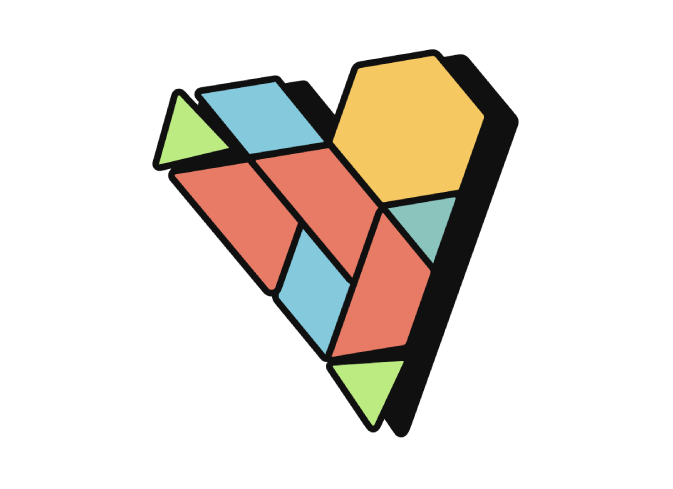The Early Years stage is a fundamental period in students’ development. This is because during this period, the foundations of their cognitive development are set.
One of the key aspects at this stage is to recognize qualities, and the ability to make links between objects and situations in their environment. This is known as pre-algebra, and it allows students to explore and understand the world around them. Teachers play a vital role in cultivating these fundamental skills by encouraging play and planning activities that include manipulation.
According to various early years curricula, such as Ontario (Canada) or the LOMLOE (Spain), and authors who have studied the learning trajectories of pre-algebraic thinking (such as Alsina or the Learning Trajectories website), this pre-algebra block can be divided into 5 sub-blocks with their respective contents:
- Logic
- Concept of grouping: belonging
- Classification based on different criteria
- Computational thinking
- Seriations
- Repetition
- Transformation
- Mathematical language
- Connections: =, > y <
- Operations: + y −
- Features/Applications:
- Change machines
- Conditions:
- Restrictions (board games)
In this article, we will talk about the first sub-block, “Logic” (also known as Change and Relationships), and will explore its didactic sequence in early years. Let’s go!
Table of contents
Concept of grouping-belonging
A Recognition of qualities and attributes of objects
The recognition and description of qualities are the first steps that students take to understand the basic characteristics of objects and their environment. During the Early Years stage, children begin to identify and name different attributes such as shape, size or color, among others. Teachers can stimulate this competency through play, as well as activities that include manipulation.
To carry out these types of activities, we can use different materials. For example, the Dienes logical blocks are a structured logical tool that can help students when they first start to recognize qualities and attributes. It can help them to understand a quality as a ‘characteristic of something’ (color, shape, etc.), and an attribute as the ‘possible variables of this quality‘). In turn, this is also a way to establish connections with other content blocks, such as Space and Shape (geometry) or Measure.

Identifying objects based on their attributes
Identifying objects based on their attributes helps students to develop different skills such as observation, make distinctions, and problem-solving. This allows them to explore the world around them in an active and practical way. It also helps to lay the foundation for more advanced mathematical and scientific skills, such as classifying objects based on more complex attributes and solving problems involving geometric and mathematical concepts. In addition, it also influences critical thinking, since students analyze and make decisions based on the characteristics they can observe in objects.
When we talk about identifying objects, we are referring to students’ ability to recognize and name objects around them, and to recognize and compare similarities and differences between them. This is a fundamental skill in cognitive and linguistic development, and is an important part of the learning process, as it helps students to understand and talk about their environment. It also encourages curiosity and exploration.
One way to identify the logical blocks mentioned above is to define each of the pieces according to their attributes.
Grouping Objects That Have a Common Attribute
Grouping involves gathering items based on a common characteristic or property.
Grouping can be temporary. You can group objects for a particular reason at any given time, then change the groups based on new criteria. For example, we can make a collection of logical blocks by grouping all the red pieces, leaving out the rest, and later make another group using the same blocks, but this time joining the square pieces.
Changing criteria and verifying that the same piece can belong to different groups helps students to intuitively begin to understand the complexity of associations.
In the following image, we can see the group of red pieces. To make this group, we have looked at each piece, and asked ourselves: “Is it red?” If the answer was yes, then we can put it in the group. If it isn’t red, then we can leave it out. To sum up, in order to make that group, we have identified an attribute that has as its quality “color” (in this case, red) in each of the pieces in the set.

At age 3-4, students should begin to develop the ability to group objects according to an attribute, such as color.
At 4-5 years, they are expected to go beyond grouping based solely on attributes. They should also be able to group by negating an attribute. For example, they can group all objects that are not blue.
By the age of 5-6, they are expected to master the different basic attributes of an object. At this stage, they may be able to group based on two simultaneous attributes. For example, they could group pieces of logical blocks that are blue and large at the same time.
Classification based on different criteria
The idea of classification comes from grouping objects based on recognizing and identifying qualities.
Classifying, as opposed to grouping, involves using the same criteria to organize all the objects in a set. If we use the previous example, we could say that the classification criterion is the quality “color”, so we would get the groups “red”, “blue” and “yellow”. With regards to classification, as opposed to grouping, there can be no pieces left over: each piece of the set has its place (only one) in one of the resulting groups.

Computational thinking
Computational thinking stands out as a fundamental skill that can be refined during the early years stage. But how do you introduce this content effectively?
We understand computational thinking as the set of problem-solving skills that includes concepts such as instruction sequencing, iteration, condition analysis and programming, among others. These concepts can be worked on in a playful and accessible way in early childhood education:
- Sequencing & Algorithms: Students can begin to understand a sequence of events with simple activities such as following recipes or building a tower of blocks in a specific order. These activities help to understand the importance of following a few steps in a certain order.
- Screenless Programming: Programming can be introduced without using electronic devices. Students can create algorithms for their friends (or objects) who could act like robots and follow instructions to move around a space.
- Games: Solving simple logical and mathematical problems is an effective way to encourage computational thinking. Puzzles, logic games, and some educational apps designed specifically for this can make learning stimulating while promoting logical thinking.
By introducing computational thinking into early childhood education, we are not only working on essential skills necessary in today’s technological world, but we are also helping to develop creativity, problem-solving, and the ability to adapt.
How can we include Change and Relationships in early years?
Early years teachers can adopt different pedagogical approaches when encouraging students to recognize qualities and make connections.
- Play-based learning: This approach focuses on the idea that play is a natural way for humans to explore the world around them, and learn through active participation. This develops social and emotional skills, experimentation, and discovery to generate meaningful learning.
- Learning based on manipulation: Exploring and solving challenges with manipulatives allows students to interact directly, explore and intuitively begin to understand abstract mathematical concepts. These materials provide a concrete representation of abstract ideas, making them easier to understand and assimilate. They also help to strengthen long-term memory, and improve social skills.
- Learning based on curiosity: Asking open-ended and provocative questions, and launching challenges that have unknown solution processes should be common practice in order to inspire curiosity. Well-formulated questions have the power to stimulate critical thinking, encourage reflection, guide discussion, and deepen understanding. Let’s practice the art of asking questions and stimulating curiosity!
- Learning based on effort and managing mistakes: We must recognize the amount of effort students put in their work when learning math. It is important to encourage a positive attitude towards math, and see mistakes as valuable opportunities to learn. As teachers, we should encourage reflective critical thinking, build resilience, and promote curiosity. By analyzing and dealing with mistakes, students can develop a deeper understanding when making connections and applying changes between objects, therefore building their confidence when overcoming challenges.


To design and test Innovamat’s curriculum for the early years education stage, we have taken into account all these ideas and approaches, among others, and have created different activities (workshops and spaces). These activities are designed for working on the content category of pre-algebra (Change and relationships) with a focus on deeper learning.
In conclusion, it is important to remember that the early years stage is crucial in recognizing qualities and guiding students to make mathematical connections. Teachers at this stage have a big responsibility, because we have the opportunity to cultivate these skills through creative and playful approaches. These will lay the foundations for solid mathematical thinking which will last a lifetime, so that students can have a promising future in terms of problem-solving.
References
Alsina, À. (2006). Cómo desarrollar el pensamiento matemático de los 0 a los 6 años: propuestas didácticas. Octaedro.
Alsina, À. (2022). Itinerarios didácticos para la enseñanza de las matemáticas de 3 a 6 años. Graó.
Learning & Teaching with Learning Trajectories (2023). Early Math – Birth to Grade 3. https://www.learningtrajectories.org/math/learning-trajectories






